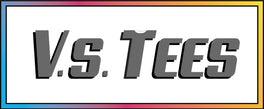Custom Printing: A Comprehensive Guide to Techniques, Tips, and Tools
Posted by ARTEMIO NERVEZ JR

Custom printing has revolutionized the way we create and personalize products. From t-shirts and mugs to posters and business cards, custom printing allows for unique and tailored designs that cater to individual tastes and business needs. This guide will provide an overview of the various custom printing techniques, essential tips for achieving the best results, and the tools you'll need to get started.
Understanding Custom Printing
Custom printing involves transferring a design or image onto a product using various printing techniques. It offers flexibility and creativity, making it popular for both personal use and business applications. Whether you want to create personalized gifts, branded merchandise, or custom apparel, understanding the different printing methods is crucial.
Popular Custom Printing Techniques

Screen Printing
Screen printing is one of the oldest and most popular methods for printing on textiles and other materials. It involves creating a stencil (or screen) and using it to apply layers of ink onto the printing surface.
Pros:
- Durable and long-lasting prints
- Ideal for bulk orders
- Vibrant colors
Cons:
- Setup can be time-consuming
- Not cost-effective for small orders
Digital Printing
Digital printing, also known as direct-to-garment (DTG) printing, uses inkjet technology to print designs directly onto the fabric or material. This method is similar to how a regular inkjet printer works but is designed for textiles.
Pros:
- High-quality prints with intricate details
- No minimum order requirement
- Quick turnaround
Cons:
- Less durable than screen printing
- Higher cost per unit for large orders
Sublimation Printing
Sublimation printing involves transferring dye onto the material using heat. This technique is particularly effective for polyester fabrics and products with a polymer coating.
Pros:
- Permanent, fade-resistant prints
- Great for all-over designs
- Smooth finish
Cons:
- Limited to polyester or polymer-coated items
- Requires specialized equipment
Heat Transfer Printing
Heat transfer printing uses heat and pressure to transfer a design from a special transfer paper onto the material. This method is popular for creating custom apparel and promotional items.
Pros:
- Versatile and easy to use
- Suitable for small runs and one-off items
- Can print on various materials
Cons:
- Not as durable as other methods
- Designs can crack or peel over time
Tips for Successful Custom Printing

Choose the Right Material
Selecting the appropriate material for your printing method is crucial. For example, sublimation works best on polyester, while screen printing is ideal for cotton. Understanding the compatibility between the printing technique and the material ensures better results.
Create High-Quality Designs
The quality of your design significantly impacts the final print. Use high-resolution images and vector graphics to ensure crisp and clear prints. Pay attention to color profiles and make necessary adjustments to match the printing method.
Prepare Your Files Correctly
Ensure your design files are properly prepared for printing. This includes using the correct file formats (such as PNG, JPEG, or vector files), setting the right resolution (usually 300 DPI), and using appropriate color modes (RGB for digital printing and CMYK for screen printing).
Test Print
Before committing to a large order, it's wise to do a test print. This allows you to see how the design looks on the actual material and make any necessary adjustments. Test prints help avoid costly mistakes and ensure customer satisfaction.
Maintain Your Equipment
Regular maintenance of your printing equipment is essential for consistent quality. Follow the manufacturer's guidelines for cleaning and upkeep to prevent issues like clogged print heads or uneven prints.
Essential Tools for Custom Printing

Design Software
Invest in good design software such as Adobe Illustrator, Photoshop, or CorelDRAW. These tools offer advanced features for creating and editing designs, ensuring they are print-ready.
Printing Equipment
Depending on your chosen printing method, you'll need specific equipment. This could include screen printing kits, DTG printers, heat presses, or sublimation printers. Research and invest in reliable brands to ensure quality and durability.
Quality Inks and Materials
Using high-quality inks and materials can make a significant difference in the final product. Choose reputable suppliers for your inks, transfer papers, and printable materials to ensure the best results.
Heat Press
A heat press is essential for heat transfer and sublimation printing. It applies the necessary heat and pressure to transfer the design onto the material. Look for a heat press that offers adjustable settings for different types of transfers.
Conclusion:
At VS Tees, custom printing offers endless possibilities for creating unique and personalized products. By understanding the various printing techniques, following essential tips, and using the right tools, you can achieve professional-quality prints that stand out. Whether you're starting a custom printing business or creating personalized gifts, this comprehensive guide provides the foundation you need to succeed. Happy printing!





